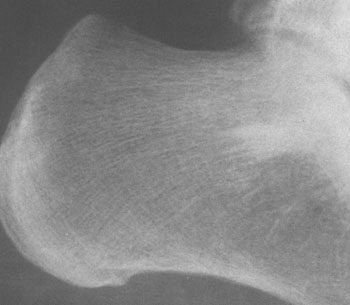CT Attenuation Measurements Can Differentiate Bone Tumors
By MedImaging International staff writers
Posted on 31 Aug 2016
A new study suggests that computerized tomography (CT) attenuation measurements can be used to distinguish untreated osteoblastic metastases from benign bone lesions.Posted on 31 Aug 2016
Researchers at Massachusetts General Hospital (MGH; Boston, USA) conducted a study in 62 patients with 279 sclerotic bone lesions found at CT. The cause of the sclerotic lesions was then assessed histologically, determining there were 126 benign enostoses (bone islands) in 37 patients, and 153 osteoblastic metastases in 25 patients. The researchers then performed an analysis of the CT images to determine sensitivity, specificity, AUC, 95% confidence intervals, and cutoff values of CT attenuation to help differentiate metastases from enostoses.

Image: A calcaneous bone with a benign enostosis (Photo courtesy of James Wittig).
The researchers concluded that CT attenuation measurements can be used to distinguish untreated osteoblastic metastases from enostoses, and that a mean attenuation of 885 Hounsfield units (HU) and a maximum attenuation of 1,060 HU provide reliable thresholds below which a metastatic lesion is the favored diagnosis. According to the researchers, the detection of metastatic disease is crucial because it allows accurate diagnosing and determination of prognosis and can drastically change treatment. The study was published in the August 2016 issue of the American Journal of Roentgenology.
“While imaging has become an integral part of diagnosing patients presenting with malignancy, it can be confusing when an osteoblastic lesion is identified in the presence and absence of a primary malignancy,” concluded lead author Connie Chang, MD, of the MGH department of radiology, and colleagues. “As CT use has increased, the frequency of incidentally detected lesions has also increased.”
The Hounsfield scale is a quantitative scale for describing radiodensity, in which distilled water at standard pressure and temperature is defined as zero HU, while the radiodensity of air under the same conditions is defined as -1000 HU; one HU represents a change of 0.1% of the attenuation coefficient of water. A practical application of this is in evaluation of tumors, wherein an adrenal tumor with a radiodensity of less than 10 HU is rather fatty in composition and almost certainly benign.
Related Links:
Massachusetts General Hospital














